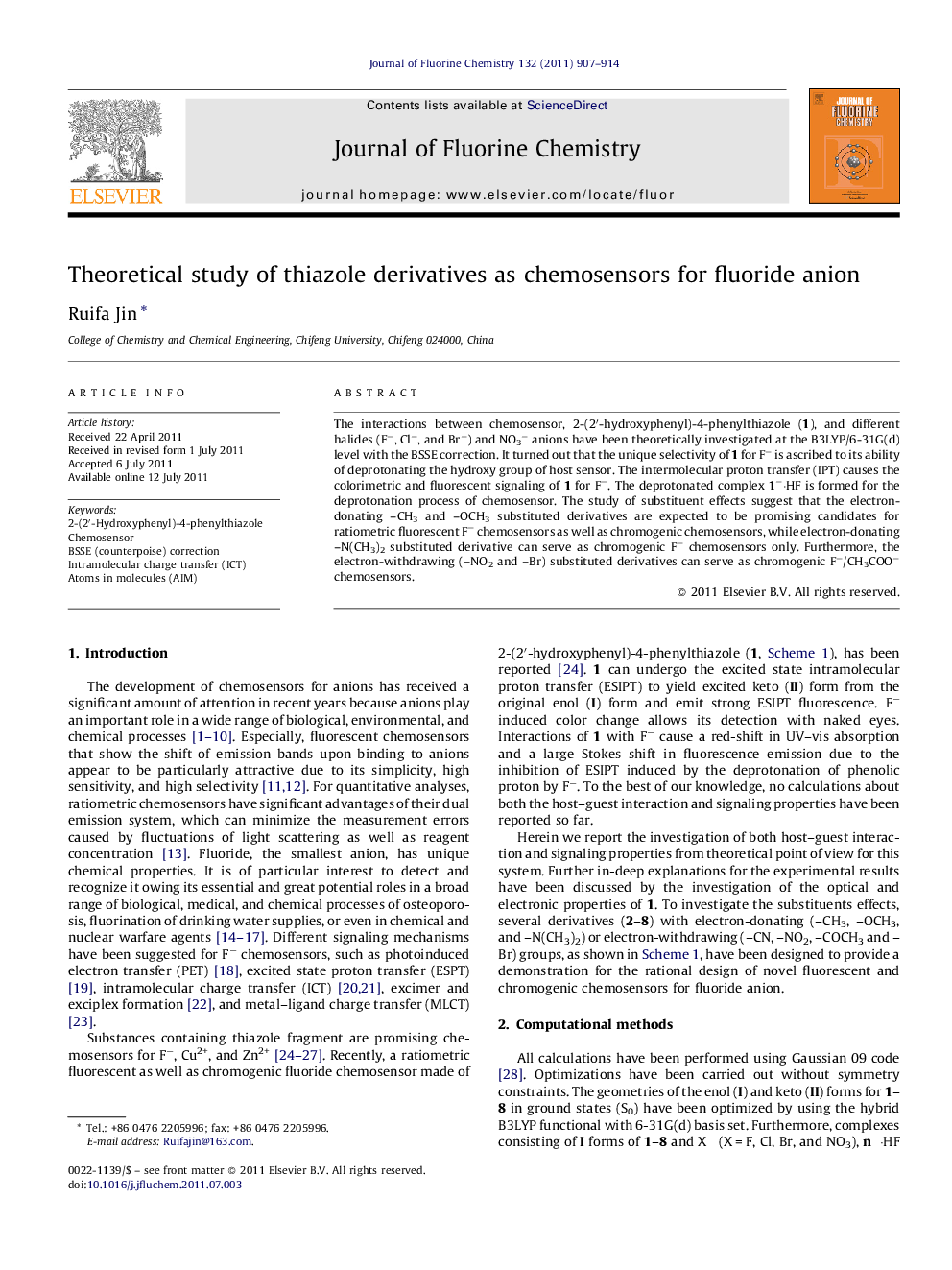| کد مقاله | کد نشریه | سال انتشار | مقاله انگلیسی | نسخه تمام متن |
|---|---|---|---|---|
| 1314886 | 975990 | 2011 | 8 صفحه PDF | دانلود رایگان |

The interactions between chemosensor, 2-(2′-hydroxyphenyl)-4-phenylthiazole (1), and different halides (F−, Cl−, and Br−) and NO3− anions have been theoretically investigated at the B3LYP/6-31G(d) level with the BSSE correction. It turned out that the unique selectivity of 1 for F− is ascribed to its ability of deprotonating the hydroxy group of host sensor. The intermolecular proton transfer (IPT) causes the colorimetric and fluorescent signaling of 1 for F−. The deprotonated complex 1−·HF is formed for the deprotonation process of chemosensor. The study of substituent effects suggest that the electron-donating –CH3 and –OCH3 substituted derivatives are expected to be promising candidates for ratiometric fluorescent F− chemosensors as well as chromogenic chemosensors, while electron-donating –N(CH3)2 substituted derivative can serve as chromogenic F− chemosensors only. Furthermore, the electron-withdrawing (–NO2 and –Br) substituted derivatives can serve as chromogenic F−/CH3COO− chemosensors.
The interactions between chemosensor substrate 2-(2′-hydroxyphenyl)-4-phenylthiazole (1) and different F−, Cl−, Br−, and NO3− anions have been theoretically investigated. Seven derivatives of 1 have been designed by introducing electron-donating or -withdrawing groups with the aim to design novel chemosensors.Figure optionsDownload as PowerPoint slideHighlights
► We investigate the interactions between chemosensor and different anions.
► The unique selectivity for F− is ascribed to the deprotonating the hydroxy.
► Intermolecular proton transfer causes the signaling of sensor for F−.
► The –CH3 and –OCH3 derivatives are promising ratiometric and chromogenic sensors.
► The –NO2 and –Br derivatives can serve as chromogenic F−/CH3COO− chemosensors.
Journal: Journal of Fluorine Chemistry - Volume 132, Issue 11, November 2011, Pages 907–914